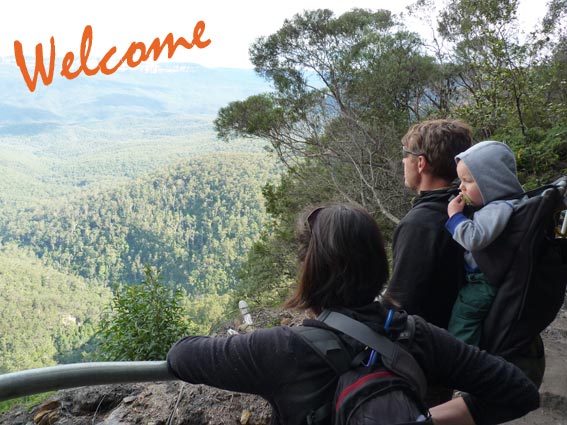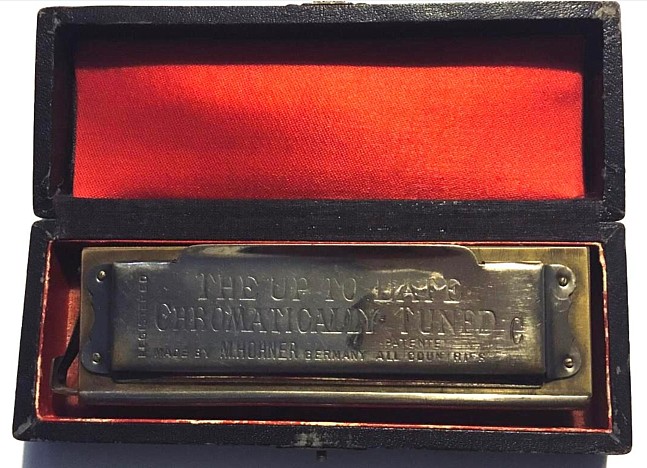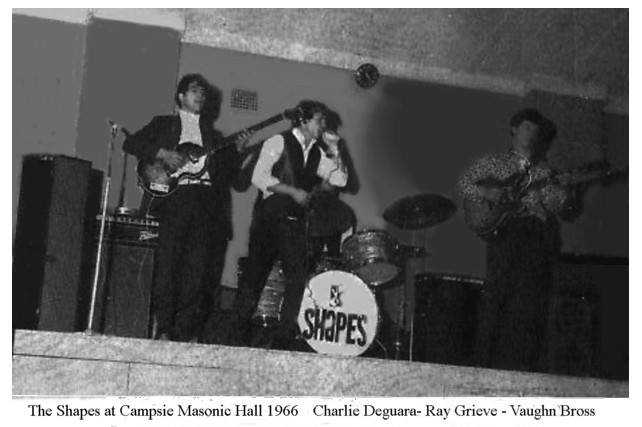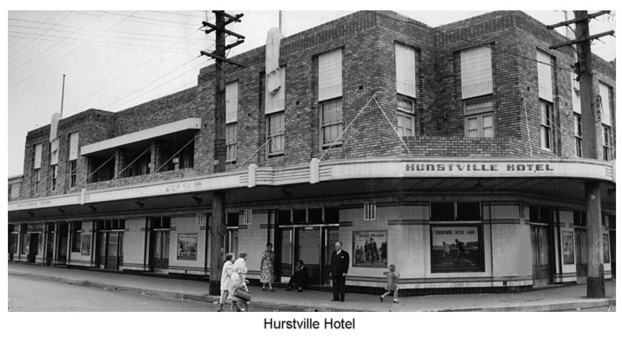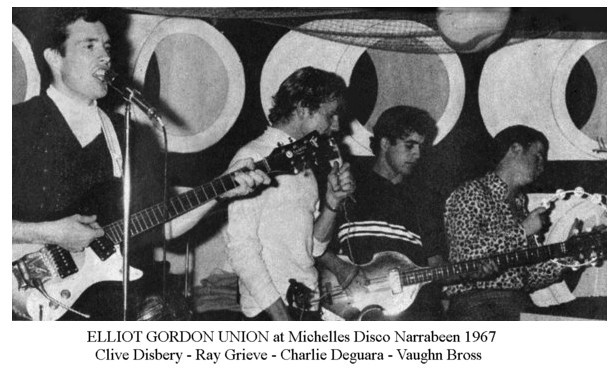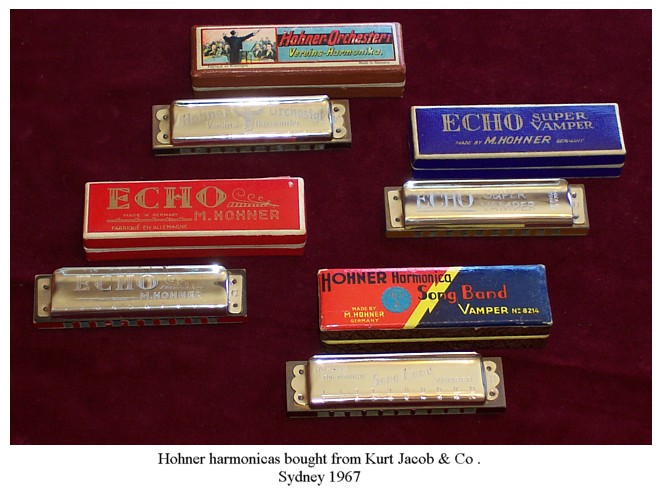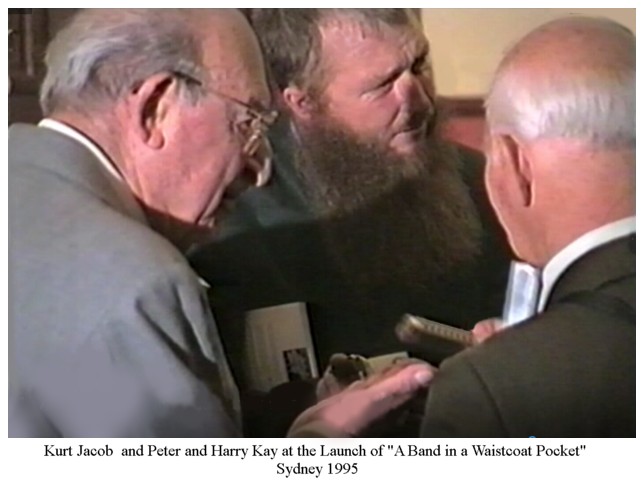The Kurt Jacob Portrait Melbourne 1937
 Kurt Jacob had only recently arrived in Melbourne from Germany to start the first official Hohner Agency, when he was approached one day in 1937, while walking along a Melbourne street, by Horace Pearson. Jacob was on his way to give accordion lessons to a group of his students. An itinerant ‘street sketch artist’, Pearson was well known to the police and was a familiar identity to the people of Melbourne.
Kurt Jacob had only recently arrived in Melbourne from Germany to start the first official Hohner Agency, when he was approached one day in 1937, while walking along a Melbourne street, by Horace Pearson. Jacob was on his way to give accordion lessons to a group of his students. An itinerant ‘street sketch artist’, Pearson was well known to the police and was a familiar identity to the people of Melbourne.
Charged a number of times for vagrancy, drunkeness and ‘sketching on a public footpath’, he spent a lot of time in jail. He told the judge that he came from a well respected family but seeing that one of his relatives was a minister of religion, perhaps he was better off ‘inside’, much to the amusement to those in the courthouse.
On another occasion before the courts, after being questioned about how he could possibly earn a living from his ‘art’, he replied that it was necessary for him to sketch, so as to pay for all the fines he kept getting. Some of his works were of King George V and Australian Prime Minister ‘Billy’ Hughes, with a sign for passers-by to ‘Drop a Penny’ in appreciation of his work. One of his political signs caused some concern with the authorities. It read: ‘The miner gives his health and life – why not give him the wages he asks’.
“I only drink methylated spirits because I can’t afford whisky,” he explained, also stating “I am a pavement artist and a good one too”.
When I interviewed Kurt in the late 1980s he remembered clearly, his meeting with Pearson. He said that it was obvious that the artist was living on the streets and in very poor health and feeling sorry for him, agreed on a fee for a sketch, holding his accordion. Kurt gave me permission to use it, which I did eventually in my second book “Boomerangs and Crackajacks“, published in 2014.
Our main conversations however, were almost always about harmonicas. I was surprised when he mentioned Hohner’s first attempt to manufacture and market a chromatic harmonica sometime he thought, before World War 1, rather than the generally accepted date of the mid 1920s. He knew nothing further, except that the ‘experiment’ as he put it, was not successful. Shortly after, I did manage to find an advertisement in a 1913 newspaper at the New South Wales State Library. Among music items on sale for Xmas at Nicholsons Music Store were ‘Hohner’s Celebrated Chromatic Harmonicas for 7/6d each‘.
No other details were given unfortunately, but fast forward to 2019 and against all the odds harmonica researcher, musician, collector, radio host and blogger, Phil Sheppard or ‘Old Shep’ from Harmonica Riff Raff, went on a trip to Tasmania and actually found a Hohner Chromatically Tuned Up-To-Date Harmonica! US harmonica researcher and expert on the subject, Pat Missin, has since established a date of 1900 or earlier for this extremely rare item.
Policeman Solves Blues Mystery 1966
I first met Kurt Jacob in 1967, a few months after joining a band called The Shapes. They were in the process of breaking up or re-organising and would eventually become The Elliot Gordon Union (EGU), Gordon being a friend of the guitarist, Vaughn Bross, and acting as a manager of sorts. The EGU had a promising start. Within weeks we had a six months residency at Michelles Disco at Narrabeen on Sydney’s northern beaches and played to full houses every night. A demo disc was also planned.
I did the vocals with Vaughn on guitar, Charlie Deguara on bass and John Chronopolous/Kadelfis on drums. Vaughn and I had two things in common – we loved the blues and had a strong interest in it’s history. We were inspired by the British blues bands that were on the scene at the time, but also lived in a time when information on such genres as blue music was not easy to come by. There was no internet of course and Blues only played on the radio when it could be fitted into the ‘pop’ category. I remember Vaughn saying “I don’t get it, how young guys about the same age as us, like Manfred Mann and The Animals for example, can write songs like ‘House of the Rising Sun‘. Doesn’t make sense”.
A few weeks later we were doing a Saturday afternoon gig at the Hurstville Hotel, when a police officer walked in and stood in front of the stage. Our first thought was that there had been a noise complaint, which meant ‘volume-down’, but as we did so, he motioned us to ‘keep-it-up’! After a few more numbers – played nervously – we had a break and he introduced himself.
The Police Station was right behind the pub – he was on duty and heard us playing. He said that he was a blues fan, loved our music, and asked us, did we realise that the music we were playing came originally from America’s deep south – not the British Bands we were probably trying to emulate.
“You should listen to the originals” he said. After a lesson on blues roots, he wrote down a list of names that we had never heard before: Big Bill Broonzy, Little Walter, Muddy Waters and John Lee Hooker etc. and then went back to the Station.
A few days later I went to my local music store to see if I could find anything by any of these artists, a move I was unsure of. The word around town was that the elderly owner was a Frank Sinatra/Doris Day jazz lover who hated rock music of any kind. In fact, there were Frank and Doris posters in the shop window. The rumour was that there had been a lot of teenagers of a slightly older era than mine, who were walking around traumatised after attempting to buy Elvis Presley records there. He apparently had a plan to keep them away from his shop by saying that he did not stock them and that ‘all Presley recordings were being deleted from sale and would soon be no longer available‘. As I read off my list of artists that had been given to me at the Hurstville Pub, I heard him scowling and grumbling.
“The only muddy waters you will find around here is in the gutter out there when it rains,” he said. He looked at me as if he thought that he was funny, which I translated as ‘not available here‘ and quickly left the premises. I ended up importing five or six LPs from England through another store.
Meeting Kurt Jacob 1967
Plans got underway for us to turn up for our pre-booked demo recording session in February 1967. The recording studio was in Darlinghurst but we were able to use Suzie Wong’s Disco in King Street for a practice session. The deal was that we had to be out of there by 6.00 pm when they would be open for the evening with their regular band.
On the ‘day before’, Vaughn got nervous about playing guitar, proclaiming that he was a classically trained pianist and felt that he should get hold of a keyboard/organ and play that instead. He was most definitely a brilliant classically trained pianist and also a very good guitarist, but no amount of coaxing would change his mind. A day of chaos had begun because we were now stuck without a guitarist for the session, as Vaughn had left in a panic to purchase an organ.
For sometime before this, I had been one of many aspiring musicians who hung out at Denny and Colin Burgess’ place at Croydon Park, Sydney, jamming and talking about what sort of bands we wanted to form or join. I rang Denny with the plea: “Can you help – we need a good guitarist in a hurry!”
He sent Marty Van Wyk over saying that he would be more than happy to help out, but as he had left The Throb, he only had a day or so to spare. He was on his way to Melbourne to join The Mixtures. With the return of Vaughn carrying his new Ace Tone organ, the practice commenced. While we were practising, I threw a spanner in the works when a spur of the moment inspiration came to me. I should play harmonica on tomorrow’s session. I had never played harmonica before, not seriously anyway. J. Albert & Son were directly opposite Suzie Wong’s and although they no longer sold Boomerangs, it was getting late and I asked if they could tell me where I could buy a harmonica in a hurry.
Alberts advised me to go up to Market Street (two blocks away) and see Kurt Jacob for some Hohners. It was after 4.30 pm and the rush hour was starting, so I raced up to Market Street, dodging traffic and pedestrians all the way, only to climb the stairs to Kurt Jacob & Co. just as the door slammed shut for the day. After ten minutes of running and almost out of breath, I banged on the door expecting a very unfriendly response. The door opened slightly, when I explained my situation and a voice said: “Oh ok, I’m Kurt Jacob, I will see what I can do”.
He insisted that I tell him the names and the keys of the songs we would be recording and sold me four harps.
“I want you to understand how to use these in a professional manner, before you take them,” he said, sitting me down to study a chords chart that he had, advising me which ones to use in the appropriate keys. Fortunately I had had a few piano lessons in the past and understood enough theory to take it on board. He was another classically trained pianist, by the way.
By the time I had run all the way back to Suzie Wong’s, everyone had gone except for Vaughn who was waiting for me on the footpath with his brand new Ace Tone organ. He said not to worry about playing harp for tomorrow’s session as he and Marty were both good players and could do it. And they did. The session went really well, but I had just bought four harmonicas that I thought I would learn to play eventually, but I didn’t.
Four Harmonicas 2021
The Late Vaughn Bross left the Elliot Gordon Union eventually and joined many bands over a period of time. Organists of his talent were in big demand. He rang me once to see if I was interested in doing some vocal spots with a blues/jazz combo that he was trying to get going. Nothing came of the project and it wasn’t something that I was interested in at the time. He toured Vietnam with the Joe Galea Big Band and unfortunately, picked up a drug habit while over there.
Back in Australia, things got worse and Joe said they had to let him go from the band and he eventually died from an overdose.
I was fortunate to meet and interview many great harmonica players and artists during my book research. Horrie Dargie promoted the Hohner Chromatic Harmonica for his friend Kurt on many occasions from the 1930s. On meeting Horrie, my first words were that I loved the harmonica, was fascinated by the history of the instrument, but felt a bit out of place because I did not actually play it – not seriously anyway.
“That’s great,” he replied. “As a non player, you will be much more subjective in your research.”
This made me feel much more welcome to the world of harmonica champions.
I met Kurt again more than twenty years after that chaotic afternoon, back in 1967.
“I don’t suppose you would remember me,” I said to him.
“Yes I do,” he replied. “I sold you some harmonicas when you came banging on my door one afternoon, after I had locked up for the night.”
I still have those four Hohners – never played and in pristine condition.
© Ray Grieve
ABOUT THE AUTHOR:
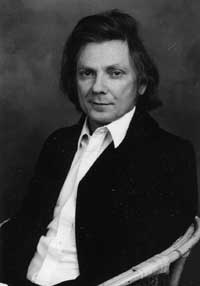 Ray Grieve was a vocalist and rhythm guitarist in 1960s Sydney rock and blues bands including the Elliot Gordon Union. He played flute and tin whistle in traditional Australian folk bands and was one of the founding members of The Rouseabouts within the Bush Music Club in the 1970s.
Ray Grieve was a vocalist and rhythm guitarist in 1960s Sydney rock and blues bands including the Elliot Gordon Union. He played flute and tin whistle in traditional Australian folk bands and was one of the founding members of The Rouseabouts within the Bush Music Club in the 1970s.
In 1981 he began the research and collection of material on the history of the harmonica in Australia. The result of this research was his book, A Band in a Waistcoat Pocket, and the companion tape and CD sets. He has subsequently released a number of CD albums with his band Bushlark.
